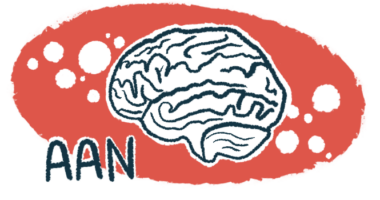Rescuing Levels of STMN2 May Be Potential New Therapy For ALS, Harvard Study Suggests

Harvard neuroscientists have discovered how the TDP-43 protein — previously linked to sporadic and inherited amyotrophic lateral sclerosis (ALS) cases — reduces the levels of a second player, called stathmin2 (STMN2) — which is necessary for neuron growth and regeneration — making the STMN2 gene a potential new therapeutic target.
The study, “ALS-implicated protein TDP-43 sustains levels of STMN2, a mediator of motor neuron growth and repair,” was published in the journal Nature Neuroscience.
As ALS patients lose their motor neurons, they progress to paralysis, and usually succumb to the disease between one to five years after diagnosis. Currently, only two therapies are approved for ALS treatment, both showing a mild effect on slowing down disease progression. As a result, ALS management is basically limited to supportive care.
Previous studies identified the TDP-43 protein as the most common component of protein aggregates found in the neurons of both sporadic and inherited ALS. TDP-43 binds to nucleic acids, DNA and RNA, regulating gene activity.
In post-mortem neurons from ALS patients, TDP-43 — which is supposed to be located in the nucleus — was instead located in the cell body (cytoplasm), where it accumulated, creating aggregates.
For the first time with human neurons, researchers set out to identify all the possible types of RNA that are regulated by the TDP-43 protein, and what happens to these RNAs when TDP-43 location is perturbed. Until now, studies like this have only been carried out in vitro with cell lines and in mice.
Therefore, the Harvard University researchers used human pluripotent stem cells that were transformed into human motor neurons (hMNs) by a process called differentiation.
Once hMNs became fully differentiated (meaning they acquired all the features of a neuron), scientists reduced (“knocked-down”) the levels of TDP-43 and looked at what RNAs changed using a technique called RNA-sequencing.
They identified 885 RNAs that changed their levels after TDP-43 knock-down. To filter for the most relevant ones, the team focused only on those that were enriched in neurons, associated with neurodevelopment or neurological diseases. They also looked at those with the most changes.
Among the top candidates, one stood out — stathmin2 (STMN2), a gene important in neural growth and repair.
Researchers confirmed that the loss of STMN2 alone was able to induce the same changes observed upon TDP-43 depletion — an inhibition of growth to the tips of neurons (called neurites and axons), which the cells use to communicate with each other.
STMN2 is key for normal hMN growth and repair, the researchers found. The STMN2 protein is also significantly reduced in the spinal cord in sporadic cases of ALS, which corroborated their findings.
“Once we had a connection between the TDP-43 and the loss of this other critical gene, STMN2, we could see how a motor neuron might begin to fail in ALS,” Joseph Klim, postdoctoral fellow in the Harvard Department of Stem Cell and Regenerative Biology, and the study’s first author said in a press release.
Low levels of TDP-43 in the nucleus and its impact in STMN2 messenger RNA make it “impossible for STMN2 to create a vital component for repairing or growing motor neuron axons,” Klim said.
Researchers then hypothesized whether it would be possible to block STMN2 reduction, and regain neuron outgrowth. They used an inhibitor against c-Jun N-terminal kinases (JNK), which are known to regulate STMN2 degradation. Once cells with TDP-43 knockdown were treated with SP600125 (an established JNK inhibitor), STMN2 levels were rescued, and neuron cells’ axons were growing again.
“With the discovery that our human stem cell model had predicted exactly what was happening in patients, (Klim) went on to test in this system whether fixing Stathmin2 could rescue the motor neuron degeneration in our dish caused by disturbing TDP-43,” said Kevin Eggan, professor of stem cell and regenerative biology at Harvard.
“In a beautiful series of experiments that I believe provide great hope for patients, he went on to show this was exactly the case: rescuing expression of Stathmin2 rescued motor neuron growth,” he added.
Overall, “the discovery we have made suggests a clear approach for developing a potential therapy for ALS — one that would intervene in all but a very small number of individuals, regardless of the genetic cause of their disease,” Eggan concluded.






